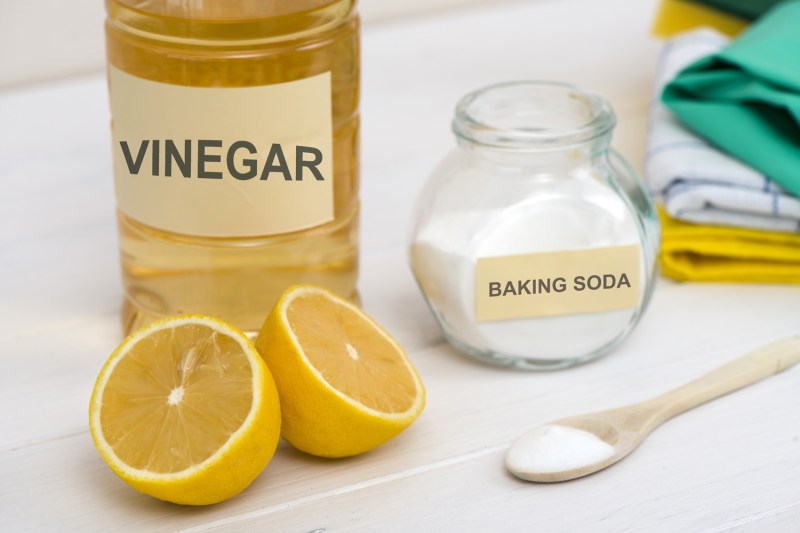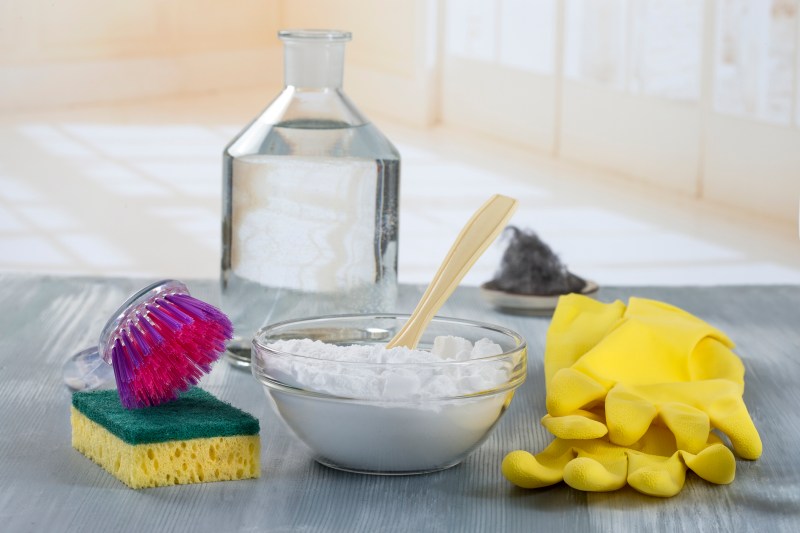The microwave is a fast and effective kitchen appliance that allows us to quickly cook and reheat food. Common in almost every household, compact enough for small apartments and dorm rooms, and reasonably affordable, there's a good chance you already know the many benefits of the microwave. One downside, however, is that over time the inside of the microwave gets dirty. Covering your food with a paper towel or a specifically designed cover can help reduce this. But inevitably you'll wind up needing to clean your microwave at some point. Thankfully this isn't a complicated process and these cleaning hacks will help you return your microwave to its pristine state with relative ease.
Below you'll find five different ways to easily clean your microwave, including steps for each method. Read on and get cleaning!

Clean with Lemon Juice
The first couple ways to clean out your microwave involve steaming liquids inside the microwave to loosen stuck-on food. The heat and moisture loosen everything up so you can go through with a towel and wipe everything down easily. Our first method uses lemon juice.
Step 1: Fill a microwave-safe bowl with 1-2 cups of water.
Step 2: Cut a lemon in half.
Step 3: Squeeze the juice from the lemon into the water. You can toss the lemon into the bowl of water as well.
Step 4: Microwave the bowl of lemon juice and water for 5-10 minutes, then let sit 5-10 minutes.
Step 5: Wipe off stuck-on food debris with a towel or paper towel. The lemon juice and water will have loosened up those food particles making them easy to wipe away. A bonus, your microwave will smell of citrus.

Clean with Vinegar
Similar to the lemon juice method above, you can microwave vinegar mixed into a bowl of water to help loosen food particles that might be stuck to the inside of your microwave. The process will be the same as with the lemon juice method above.
Step 1: Filled a microwave-safe bowl with 1-2 cups of water.
Step 2: Add anywhere from 2 tablespoons to 1/2 cup of vinegar to the bowl of water.
Step 3: Microwave on high for 5 minutes.
Step 4: Let sit for 5-10 minutes.
Step 5: Wipe down the microwave with a towel or paper towel.

Soap and Water
You can clean your microwave using regular old dish soap and a sponge. If you aren't fighting against a lot of stuck-on food, just wipe down the inside of your microwave with a soapy sponge. If there are tougher bits, microwave the bowl first as in the methods above.
Step 1: Fill a microwave-safe bowl with water and 1-2 drops of dish soap.
Step 2: Microwave for 2-3 minutes.
Step 3: Let sit for 5 minutes so the steam can work away at the dried-on food.
Step 4: Wipe clean with a sponge or towel.
Steam Only Method
Maybe you don't have lemons on hand, you don't like the smell of vinegar, or you don't want to microwave dish soap, using a paper towel or kitchen towel soaked in water is perhaps the easiest way to clean your microwave.
Step 1: Wet a paper towel or dish towel.
Step 2: Microwave for 5 minutes to produce steam.
Step 3: Let sit 5 minutes so the steam can do its work and the towel can cool.
Step 4: Wipe down the inside of the microwave with the towel. Easy!

Removing Smells From Your Microwave
The above methods are all great at removing stuck on food. But what if your microwave has absorbed odors from previous meals? What's the best way to remove those smells? Baking soda is an excellent ingredient to help remove smalls (and also absorbs moisture). This works in the refrigerator as well.
Step 1: Place an open container of baking soda or a bowl of baking soda in the microwave.
Step 2: Close the door and let sit. You don't actually use the microwave function in this method.
Step 3: After 24-48 hours (or longer if needed) remove the baking soda from the microwave. It's as easy as that.
And that's it. It's really a pretty easy process. Any of these solutions can also be used to wipe down the outside of the microwave. And putting the tray into the dishwasher is a great way to get it really clean. Don't forget to add the microwave to your spring cleaning list! You'll enjoy its spotless interior every time you use it.



